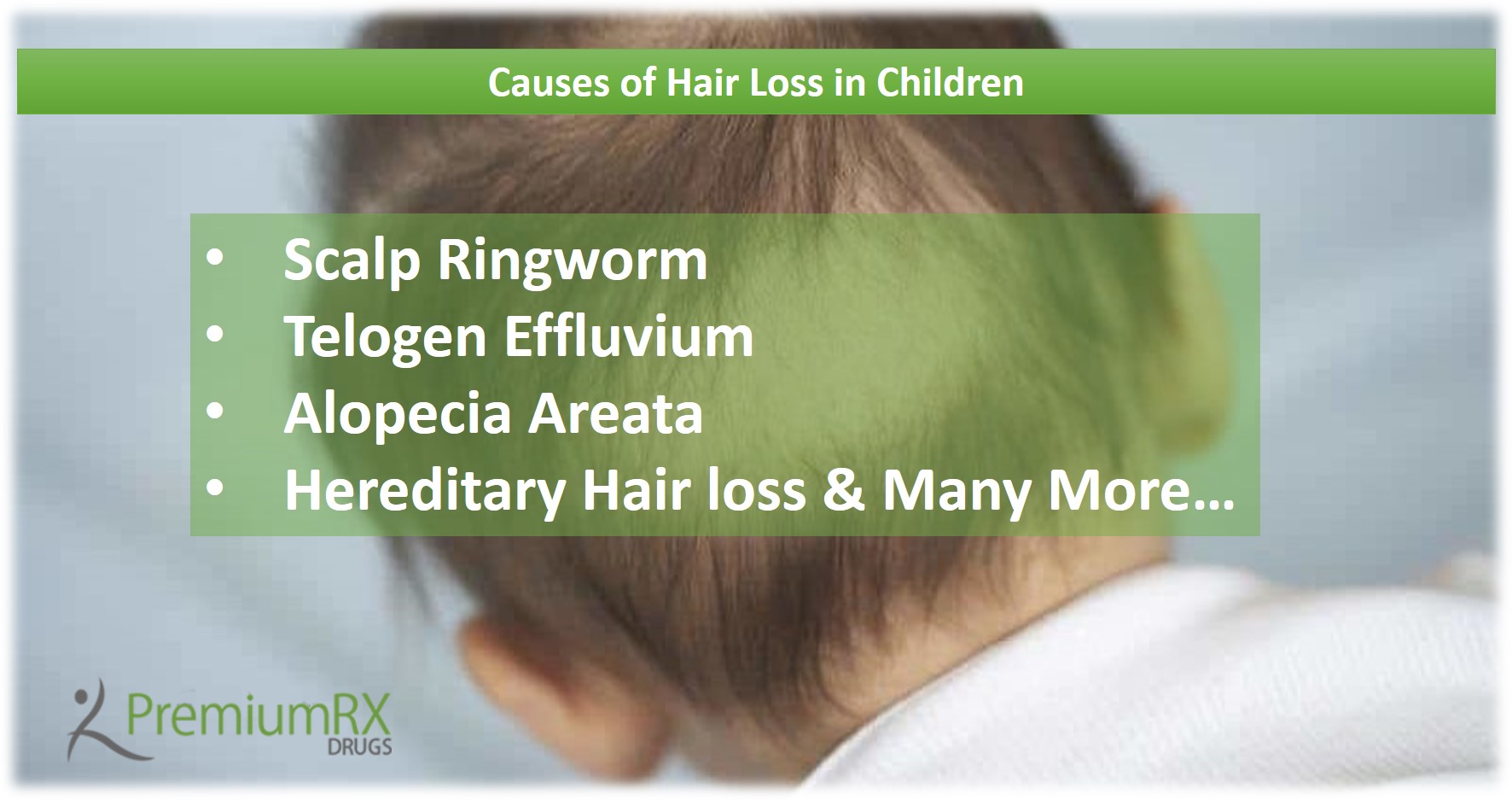Normal hair loss in children is not a major concern. However, when hair loss is abnormally high, it becomes clear that there might be a serious cause.
There are many causes of hair loss in children, but the most common is alopecia. Just like adult hair, the kids’ hair also follows a specific hair cycle. The hair strands follow a patterned growth from 2-6 years, and then they go through a resting phase called the Telogen phase.
Here are a few common reasons behind the excessive or abnormal hair loss in children:
- Tinea capitis or Scalp ringworm
The tinea capitis is one of the most common causes of hair loss in children. Tinea capitis is a type of ringworm that forms ring-like lesions on the scalp. The infection caused by tinea capitis is contagious and can even spread to eyelashes and the scalp. The infected area becomes flaky and scaly. A UV light is required to diagnose the presence of this fungal infection.
- Telogen effluvium:
It is another reason behind a child’s hair loss. When the child’s hair enters the Telogen Phase, the hair growth is interrupted. In this case of Telogen effluvium, rather than the normal 10-15% of hair going into the Telogen phase, all hair on the head is thrown into the Telogen phase. As a result, hair loss occurs, followed by complete baldness. Hair loss lasts for 3-4 months, but after that, regrowth follows. This kind of baldness in children is seen during extreme fever, vitamin A overdose, medicinal side-effects, injury and use of general anaesthesia, etc.
- Alopecia areata:
It is a rare condition occurring in only 1 out of 1000 children. In this case, symptoms are similar to those seen in adults. In children with alopecia areata, hair fall can be observed as small bald patches on the head. It is an autoimmune disorder when the body’s immune system becomes active against the body itself. The diagnosis of hair loss due to alopecia in children is made solely through examination, and there are no specific tests for confirmation.
- Hereditary hair loss:
This type of hair loss in children is an autosomal trait, and one can also observe the loss of eyelash hair and eyebrows. Hereditary hair loss is mostly permanent and may affect a wide area of the scalp.
- Chemical hair loss:
Use of various kinds of medicines is also known to cause hair loss in children. Toxicity from alkylating agents, antimetabolites, and mitotic inhibitors is known to cause hair loss and weakening of hair follicles. The irradiation caused by the chemical hair loss is also another cause of permanent or temporary hair loss. Many other drugs, such as thyroid drugs and sodium valproate, are also known to cause hair loss.
- Endocrine causes:
In many cases of hormonal imbalances, you can observe hair loss. Hair loss in children can be due to hyperthyroidism, hypothyroidism, hypoparathyroidism and the problem of uncontrolled diabetes mellitus.
- Nutritional deficiency:
Deficiency of a few important nutrients in the body can cause hair loss. Important minerals for the body, such as zinc, iron, biotin, and magnesium, along with nutrients like omega-3 fatty acids, can cause hair loss.
- Hair shaft trauma:
Hair shaft trauma is another condition of hair loss. It is usually caused by damage to the hair shaft due to actions such as excessive hair pulling, excessive use of chemical/heating agents, and finally, excessive friction from rubbing with a pillow/chair head.
Some children who are suffering from trichotillomania are known to pull their hair out of their heads obsessively.
Be it any cause of hair falling, the doctor will diagnose the issue and will plan the treatment accordingly. If you see that your child is facing excessive hair loss, then visit your paediatrician immediately, as they will determine the cause of hair loss in children. The earlier a problem is detected, the easier the treatment procedure is.
You can buy finpecia 1mg for men aged 18 and over. For hair loss, Finpecia (finasteride) is indicated for men between the ages of 18 and 41. It is not approved for women or pediatric patients.
Max Jones
Latest posts by Max Jones (see all)
- How to Revive Your Sex Life - October 27, 2023
- Smoking and Asthma - October 20, 2023
- 10 Causes Of Erectile Dysfunction You Probably Didn’t Know About! - June 29, 2023




